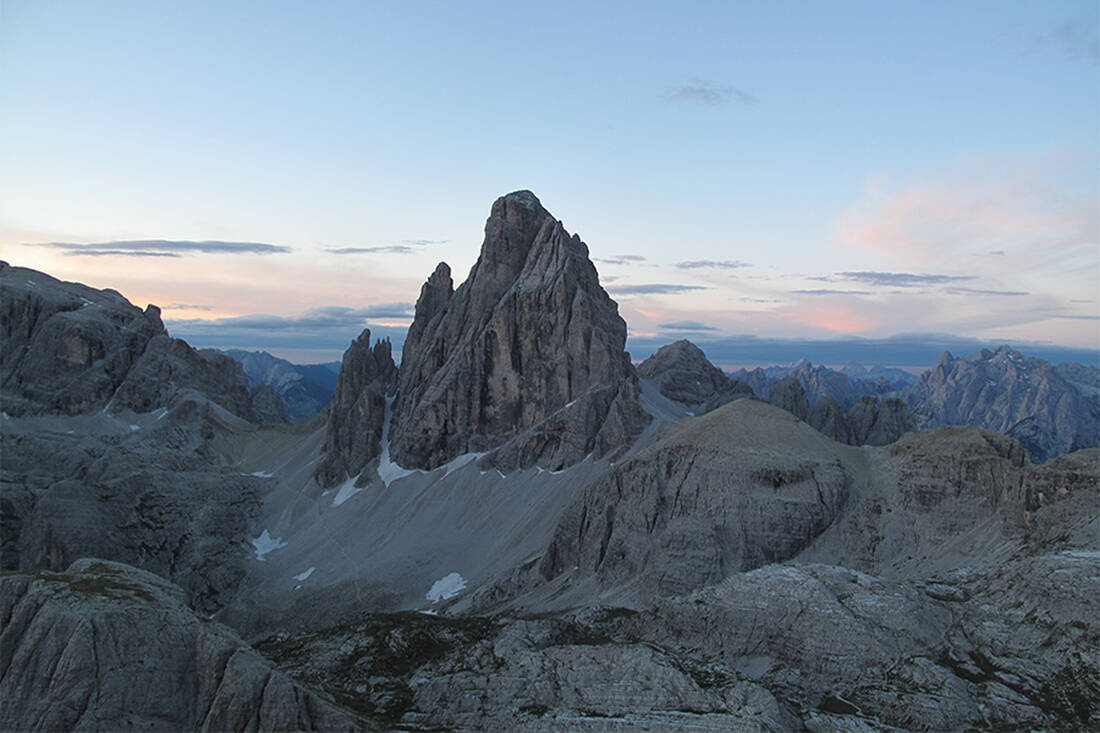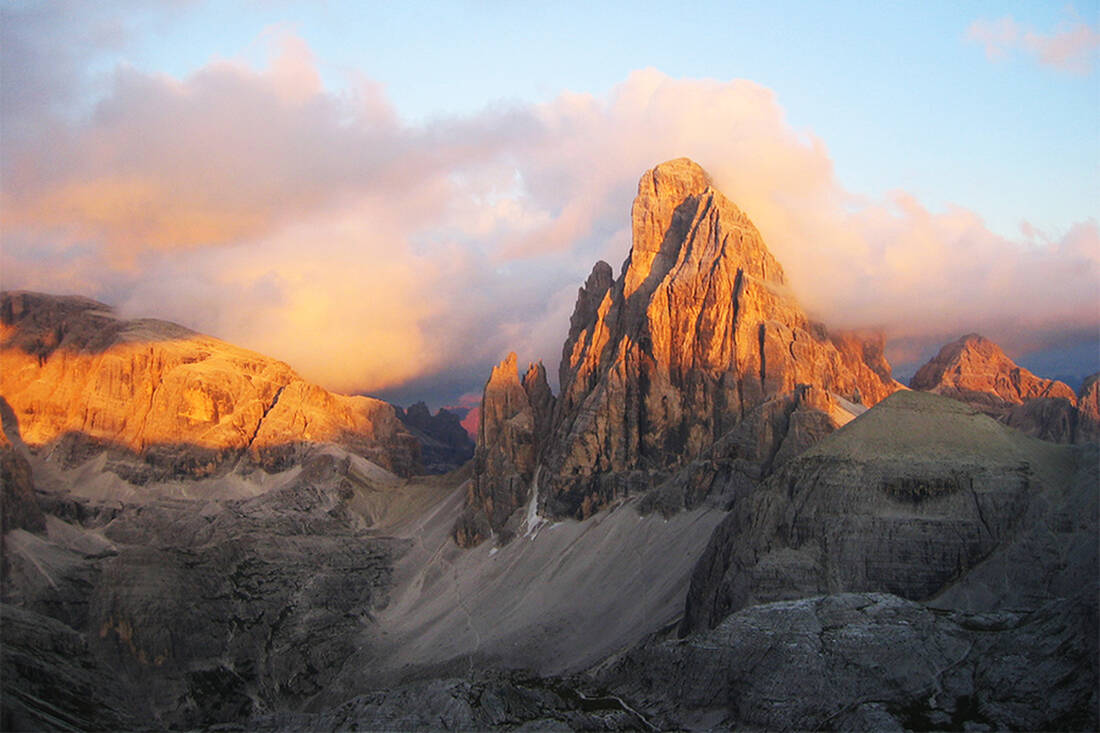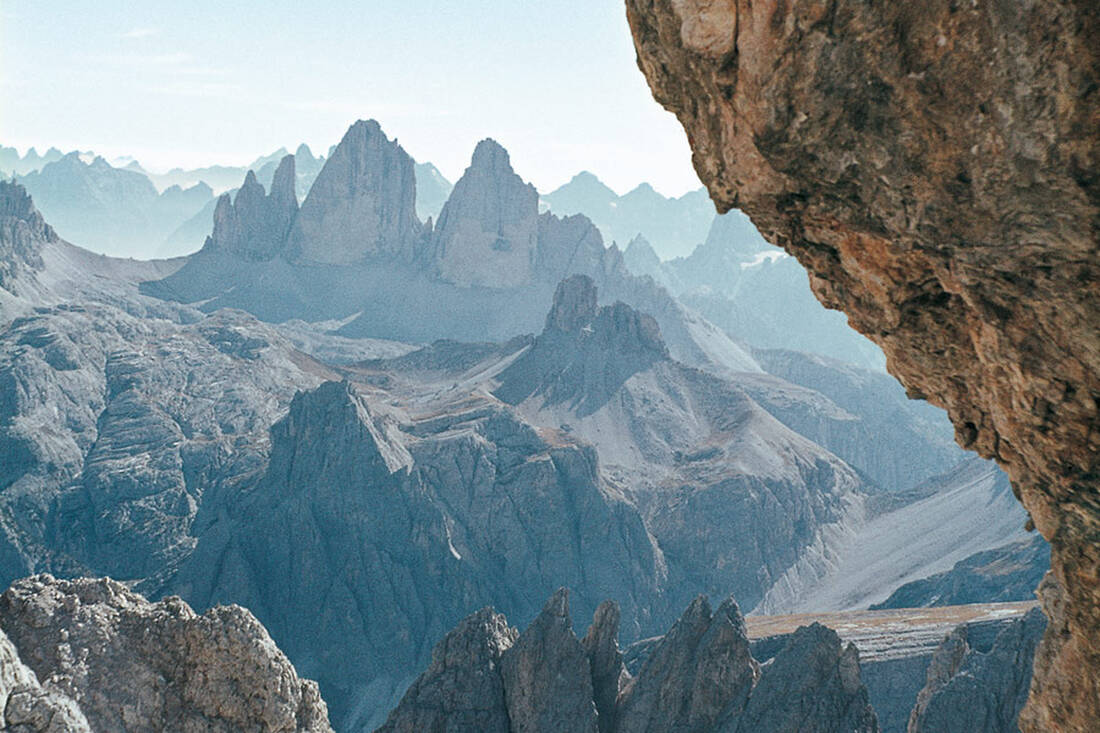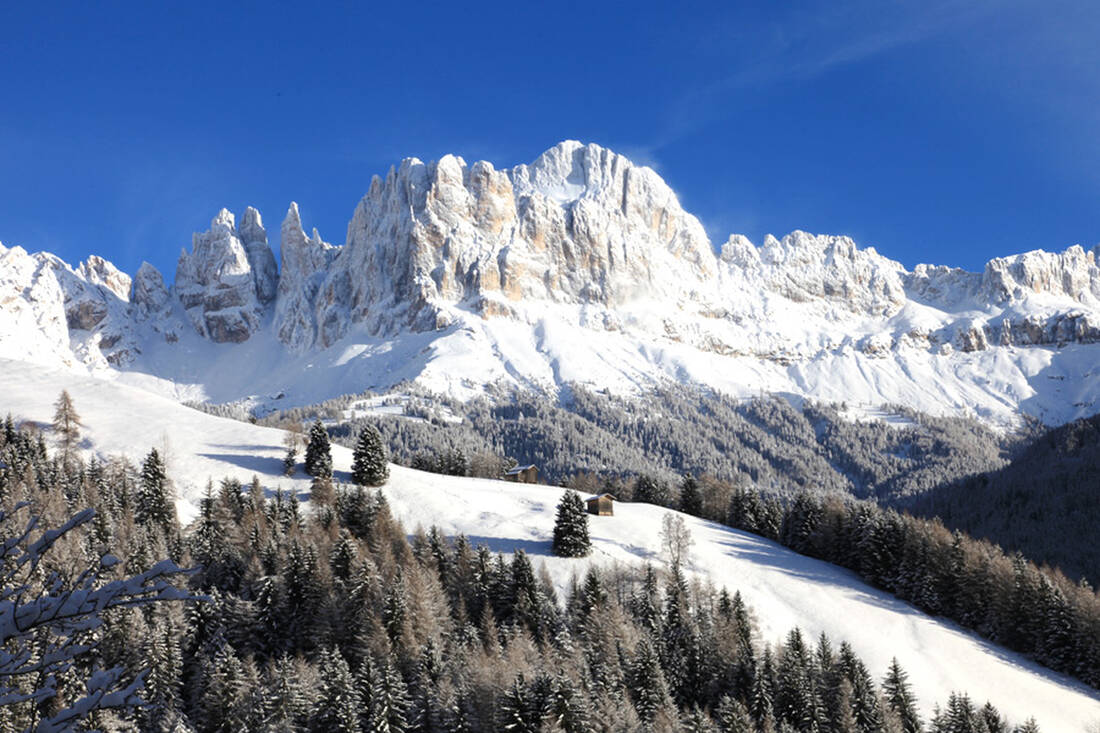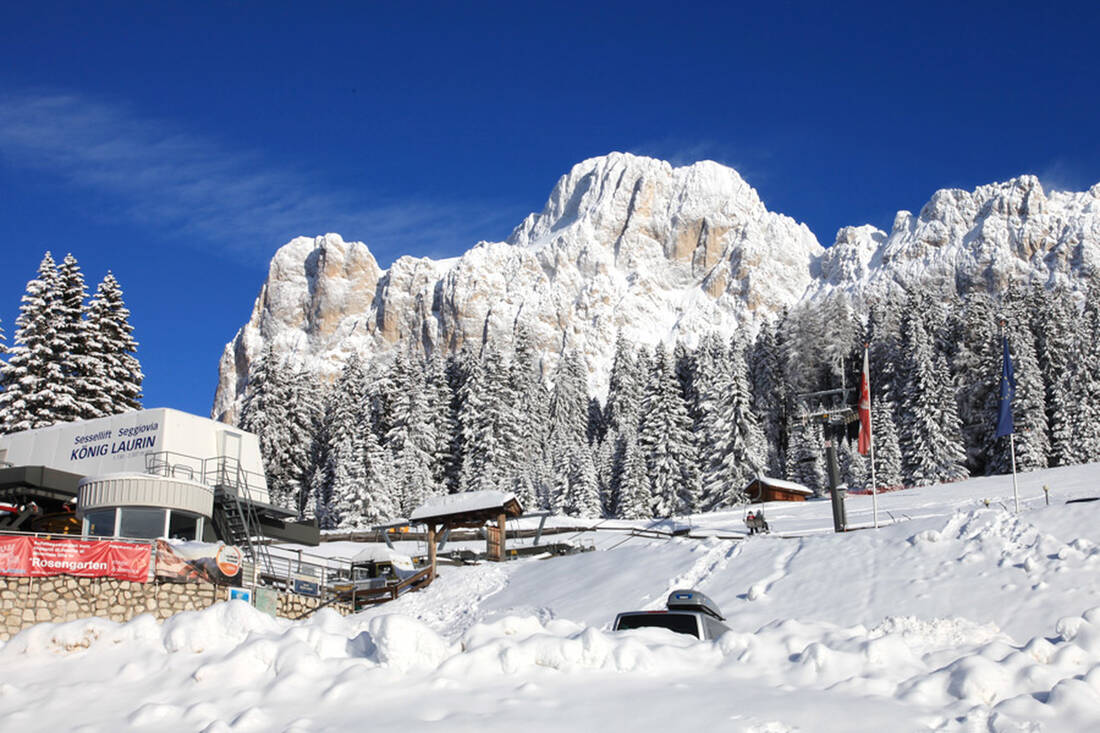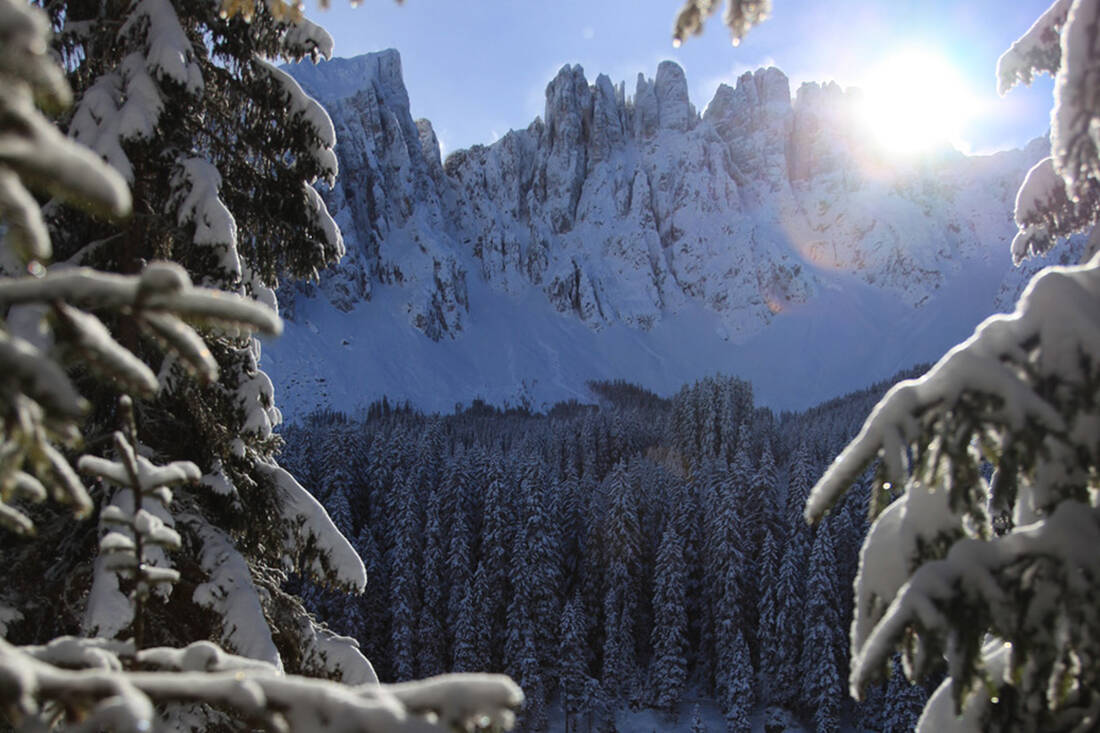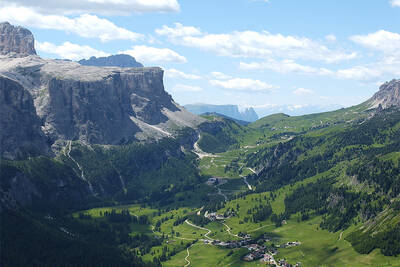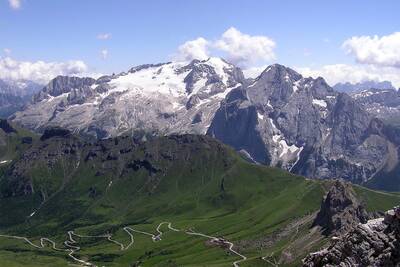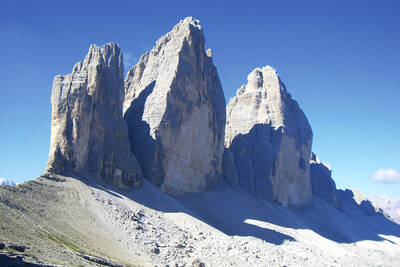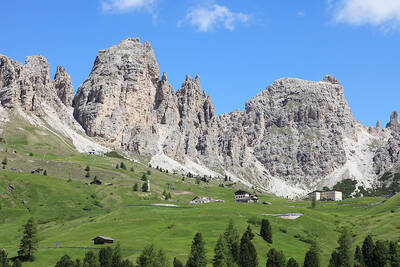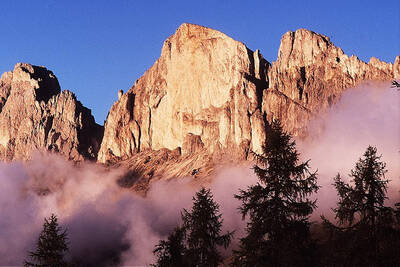They are among the landmarks of South Tyrol - the Dolomites with their rugged appearance of peaks, massifs, pinnacles, and plateaus. Because it is one of the fifty most beautiful landscapes in Europe and the wealth of nature and national parks is impressively high, parts of this mountain range in the southern limestone Alps rightly bear the title "UNESCO World Natural Heritage Dolomites".
Dolomites
From tropical coral reefs to mighty mountain peaks
It didn't always look like this here. It may be hard to imagine, but once the waves of a prehistoric tropical sea lapped over mighty coral reefs and extensive coral banks. 230 million years ago, there was not much to see of the current mountains. Not of the Marmolata, at 3,343 meters the highest mountain in the Dolomite group, and not of the Tre Cime, the Rosengarten, the Schlern, the Sella group, the Geisler group, or the Langkofel.
It was only through meltwater and weathering that the characteristic mixture of steep reefs, spectacular pinnacles, terraced plateaus, and gently sloping alpine meadows, for which the Dolomites are known and popular today, was created.
This is particularly picturesque when the sun sets and everything is bathed in a magical, reddish light - the natural spectacle, known as "Alpenglow" or "Enrosadira", gives the South Tyrolean evening hours a wildly romantic flair.
A name etched in stone
The Dolomites owe their name to the French mineralogist Déodat Gratet de Dolomieu, who analyzed the predominant rock at the end of the 18th century and discovered a typical carbonate composition that would subsequently go down in history as dolomite.
Actually, only a small part of the mountain range, which was still called "Bleiche Berge" before Dolomieu's discovery, is made of that rock. The majority consists of limestone sediments, deposits of shells and corals, which are ultimately responsible for the whitish-gray color.
Today's Dolomites extend over five Italian provinces - South Tyrol, Trentino, Udine, Pordeone, and Belluno. Varying altitude information and different definitions make counting difficult, but it can be assumed that in the Dolomites, more than 60 main peaks exceed the magical three-thousand-meter mark. The aforementioned Marmolata is one of them and also has the only remaining major glacier in this mountain range.
Wandering and snow flurries
In the north, the Dolomites are bordered by the Puster Valley, and in the east, the Sexten Valley forms the boundary. In the south, the Piave River and the Valsugana Valley mark the border, while in the west, the Eisack Valley and the Adige Valley play this separating role. Today, the region mainly lives off tourism.
Ten different Dolomite high-altitude trails attract hikers to the overwhelming natural landscape, and in twelve ski areas, which operate under the umbrella brand "Dolomiti Superski", skiing becomes a regional matter: For 450 lifts, you only need a single pass and can then make your turns in the snow on more than 1,200 kilometers of slopes. Cortina d'Ampezzo is one of these classic ski resorts, where the "Dolce Vita" also pulsates joyfully in the winter months and attracts a high number of international guests. Even James Bond, the secret agent of Her Majesty, the British Queen, has outpaced his pursuers on the ski slope here.
We have taken a closer look at some of the most important mountain ranges and groups in the Dolomites for you.
 How do you like the content of this page?
How do you like the content of this page?
Please give us your feedback!
Month

Vacation Offers
tips







